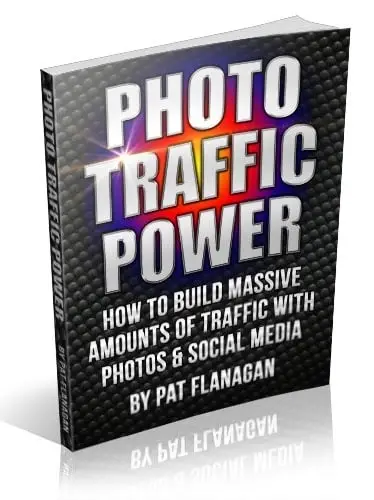Viral marketing is a dynamic style of promotion that relies on an audience to organically generate and propel the message of a product or service. Unlike traditional marketing, where the focus is primarily on the target audience, viral marketing aims for widespread sharing and exponential reach. When a marketing campaign goes viral, it spreads rapidly across social media platforms, capturing the attention of not just the intended audience but also the public at large.
Here’s how it works:
- Buzz-Worthy Content: Viral marketing thrives on content that resonates with people. Think of those unexpected phenomena that suddenly flood your social media feeds: quirky memes, trending TikTok sounds, or captivating videos. These pieces of content get shared and promoted like wildfire because they strike a chord with the audience.
- The Power of Memes: Memes, those humorous or relatable images or videos, are a prime example of viral marketing. They capture attention, evoke emotions, and encourage sharing. Remember Baby Yoda, the Milky Way meme, or the infamous “It’s Corn” trend? These seemingly random phenomena take over our feeds because they connect with us.
- Data-Driven Insights: Brands don’t need to start from scratch to create viral content. Instead, they can analyze their data. By understanding what resonates with their audience, they can craft content that has the potential to go viral. Tools like Sprout Analytics provide valuable insights to guide marketers in their quest for social media superstardom.
Now, let’s explore the pros and cons of viral marketing:
Pros:
- Massive Reach: Going viral means your message reaches a vast audience. It’s like having your brand and content in nearly everyone’s social media feed.
- Brand Visibility: Viral campaigns boost brand visibility and create buzz around your product or service.
- Cost-Effective: Viral marketing often requires minimal investment compared to traditional advertising.
Cons:
- Unpredictability: While some content goes viral effortlessly, others don’t. It’s hard to predict what will resonate with the masses.
- Short-Lived: Virality can be fleeting. The spotlight may fade quickly, leaving marketers hungry for sustained engagement.
- Potential Backlash: Going viral isn’t always positive. Negative feedback or misinterpretation can harm your brand.
So, whether you’re chasing trends or focusing on a broader marketing funnel, remember that viral marketing is a powerful tool—but it comes with its own set of challenges.
What are some examples of viral marketing?
Here are some memorable examples of viral marketing that captured the internet’s attention:
- ALS Ice Bucket Challenge: In 2014, the ALS Association launched the Ice Bucket Challenge. Participants poured ice-cold water over themselves, raising awareness about amyotrophic lateral sclerosis (ALS) and encouraging donations. Celebrities, politicians, and everyday people joined in, making it a global sensation.
- Old Spice “The Man Your Man Could Smell Like”: Old Spice’s humorous and surreal commercials featuring the “Old Spice Guy” went viral. The character’s witty monologues and absurd scenarios resonated with viewers, leading to increased brand engagement.
- Dollar Shave Club: The startup’s witty and low-budget promotional video, where the founder humorously explained the benefits of their subscription service, garnered millions of views. It showcased how effective a simple, relatable message can be.
- Gangnam Style: Psy’s catchy K-pop song and its quirky dance moves became a global phenomenon in 2012. The music video’s absurdity and humor led to countless parodies and imitations, making it one of the most-watched videos on YouTube.
- Oreo’s “Dunk in the Dark” Tweet: During the 2013 Super Bowl blackout, Oreo tweeted a simple image of an Oreo cookie in partial darkness with the caption, “You can still dunk in the dark.” The tweet went viral, demonstrating real-time marketing agility.
- Blendtec’s “Will It Blend?” Series: Blendtec’s YouTube series featured the company’s founder blending unusual items (like iPhones and golf balls) in their blenders. The quirky videos showcased product durability and became a hit.
- The Dress: In 2015, a simple photograph of a dress sparked intense debate online. Was it blue and black or white and gold? The viral sensation highlighted how perception and context play a role in our visual experiences.
Remember, viral marketing often combines creativity, relatability, and unexpectedness. It’s about tapping into the collective consciousness and creating content that people can’t help but share.
What are some common mistakes in viral marketing?
Let’s explore some common mistakes in viral marketing and how to avoid them:
- Automatically Avoiding Overly Promotional Content:
- No Connection Between Your Message and Your Business:
- Overemphasizing Creativity:
- Not Looking Beyond Brand Awareness:
- Not Sharing Systematically:
Remember, viral marketing is a delicate balance between creativity, relevance, and strategic goals. Avoid these pitfalls to maximize your campaign’s impact!
What are some benefits of viral marketing?
Let’s explore the benefits of viral marketing:
- Massive Reach: Viral content spreads rapidly across social media platforms, reaching a vast audience. It’s like having your brand and message in nearly everyone’s feed.
- Brand Visibility: Viral campaigns create buzz around your product or service. When people share your content, they inadvertently promote your brand.
- Cost-Effective: Viral marketing often requires minimal investment compared to traditional advertising. A well-crafted piece of content can yield significant returns.
- Engagement: Viral content encourages interaction. People comment, share, and discuss it, leading to increased engagement with your brand.
- Word-of-Mouth: Viral marketing relies on people sharing content with their networks. Positive word-of-mouth endorsements are powerful for brand credibility.
- Boost in Traffic: A successful viral campaign can drive a surge of traffic to your website or landing pages.
- Creativity and Innovation: Viral content often pushes creative boundaries. It encourages marketers to think outside the box and come up with fresh ideas.
Remember, while viral marketing has its advantages, it also comes with challenges. It’s essential to strike a balance between creativity, relevance, and strategic goals.






